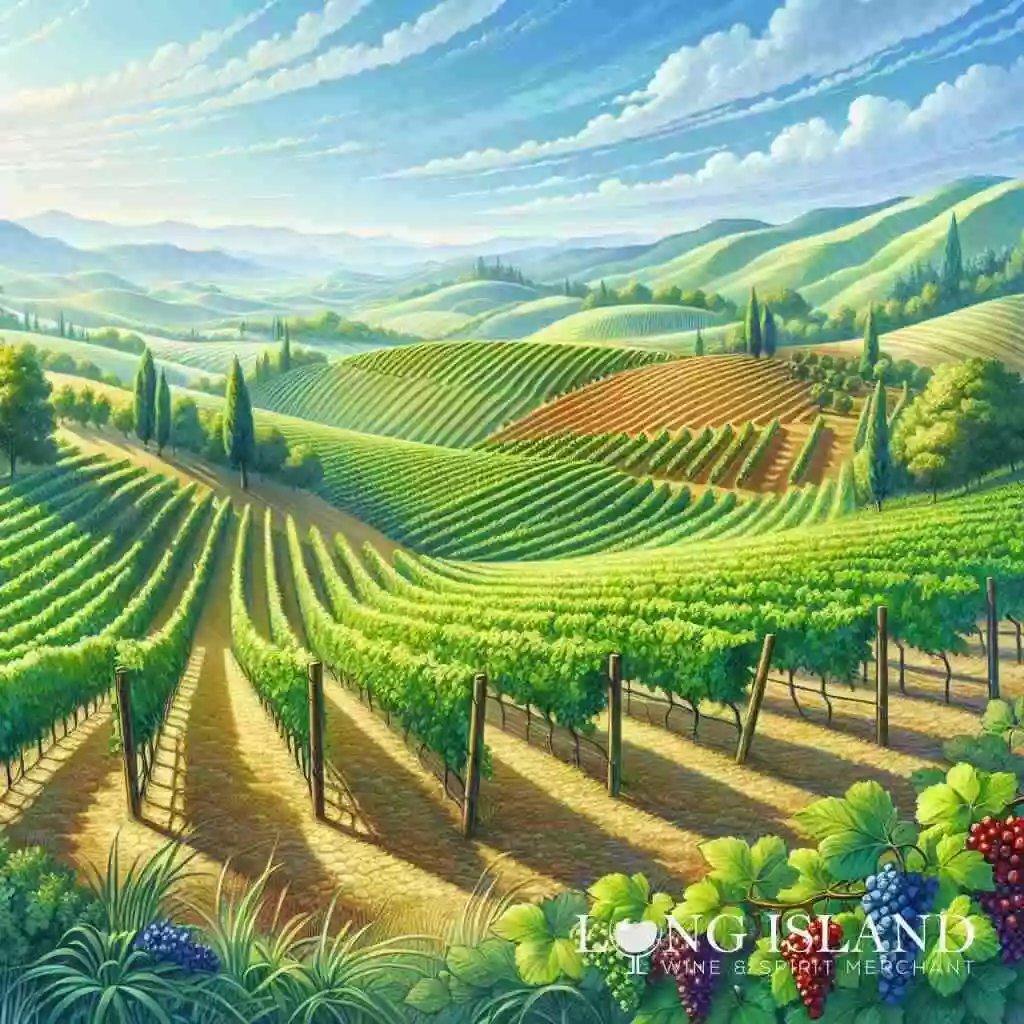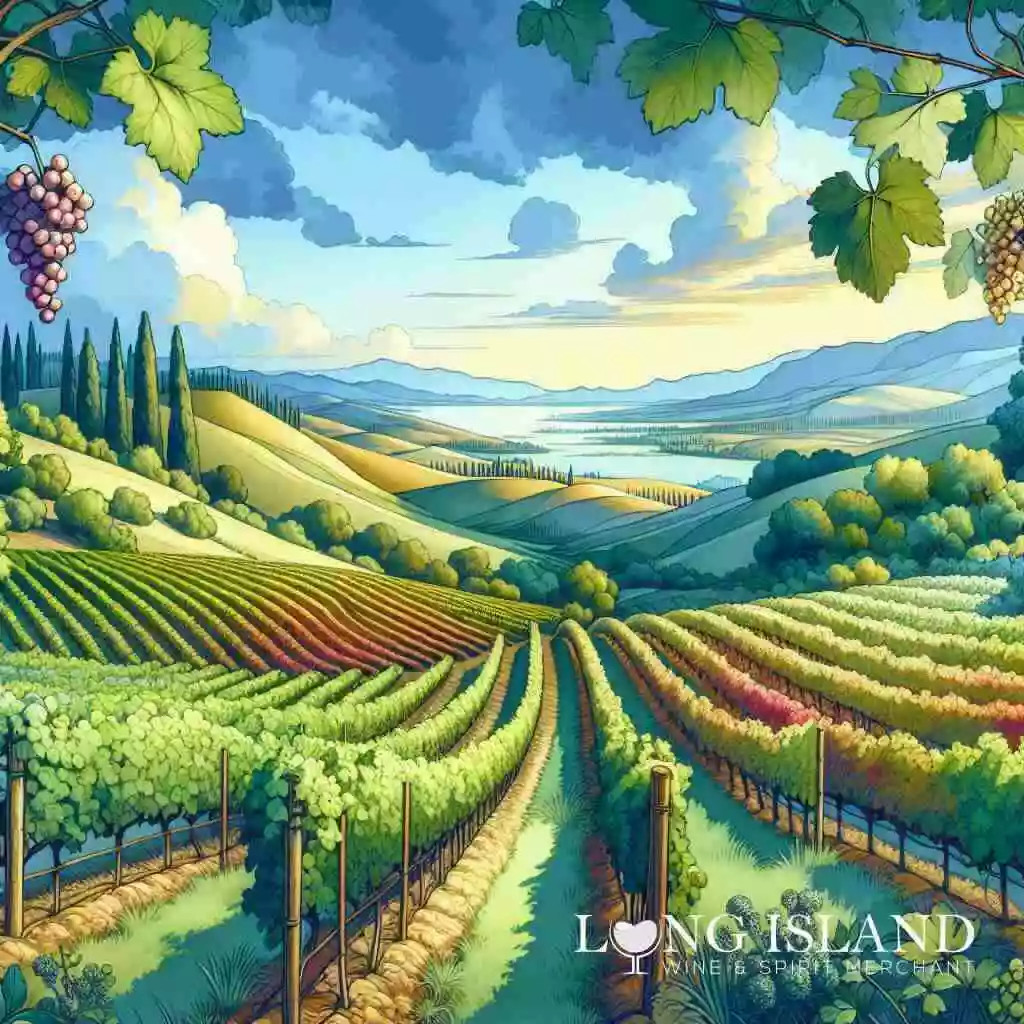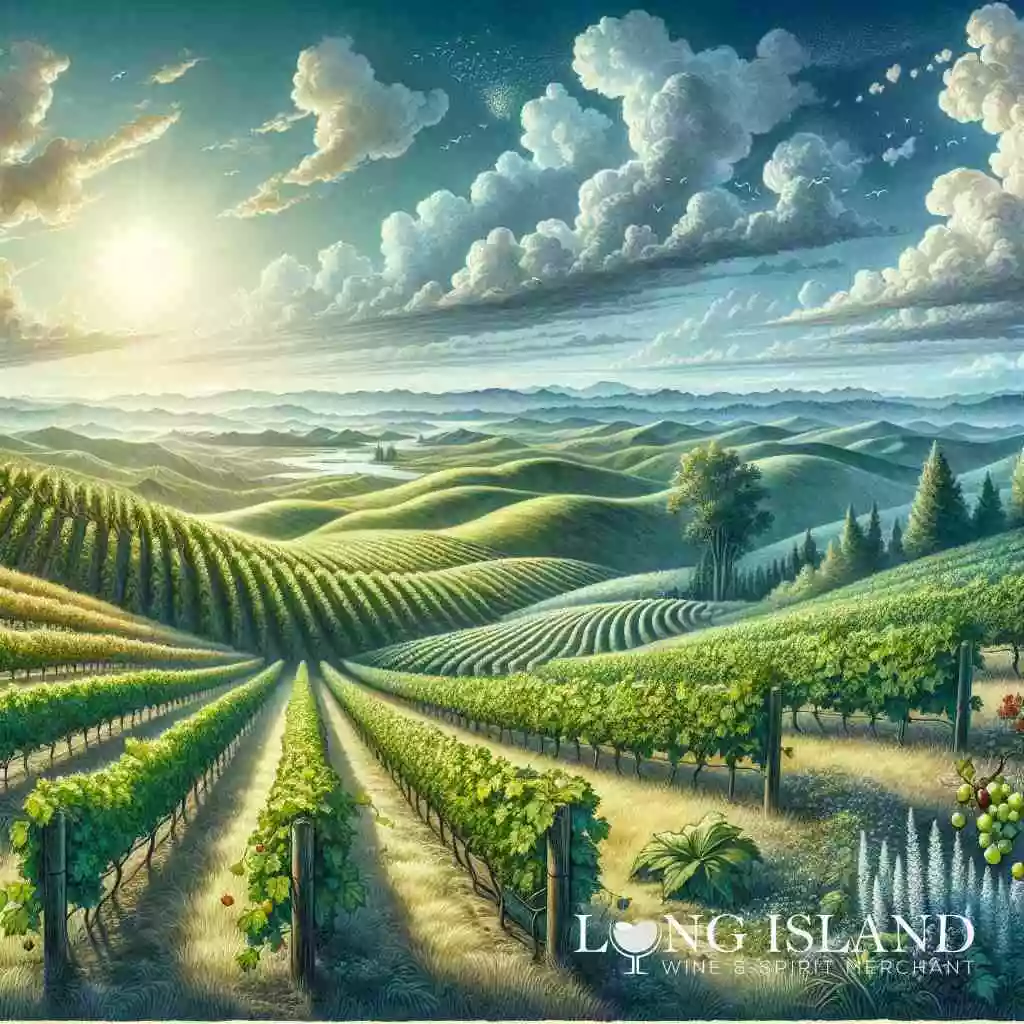
How Does Geography Affect Wine Taste? Find Out Today!
October 25, 2024
Introduction Uncorked
Setting the Stage: Geography and Wine
Wine lovers and connoisseurs frequently discuss the unique characteristics that distinct regions impart to wine. The role of geography is pivotal in shaping a wine’s profile, offering a fascinating canvas of flavors for the discerning palate. Much like a skilled artist, winemakers draw from the earth, climate, and seasons to craft each bottle. As consumers, we can unravel this geographic mosaic by understanding how landscape nuances define what we taste.
A Journey Through Vineyards: Understanding Terroir
The French term “terroir” encapsulates the symbiotic relationship between vine, land, and climate that influences wine’s final expression. It is the interplay of soil composition, microclimates, and regional influences that merge to craft wine terroir, bestowing it with a singular identity. Connoisseurs often explore terroir as part of a compelling journey, fascinated by the complex confluence of natural elements that converge to shape exceptional wines. By learning and appreciating terroir, one enriches their wine-tasting experience, gaining insight into the origin and stories behind each sip. Discover more about wine terroir and the delightful narratives it unveils.
Why Geography Matters More Than You Think
Imagine savoring a glass of wine that embodies the essence of its birthplace. The geography surrounding a vineyard can profoundly affect the vine’s development, influencing everything from aroma to texture. From the chalky soils of Champagne to the volcanic terrains of Sicily, each environment imparts its defining mark. Understanding geography’s impact extends beyond casual enjoyment into an exploration of wine’s intricate dimensions. This awareness deepens appreciation and allows enthusiasts to engage in an enriching sensory experience. Whether indulging in a favorite vintage or sampling a new region, geography remains a key player behind every wonderful tasting note.
Decoding Terroir: The Secrets of Soil and Climate
Unearthing the Role of Soil Composition
Soil composition in vineyards plays a crucial role in shaping a wine’s characteristics. The type of soil affects how vines absorb nutrients and water, ultimately influencing the flavor profile of the grape. Soils rich in limestone, for example, can impart a distinct minerality that wine enthusiasts often seek in their glasses. Each soil type, from clay to gravel, offers a unique interaction with the vine, dictating its growth and fruit quality. Understanding the intricacies of soil composition unravels a layer of the regional wine taste puzzle, helping wine lovers appreciate the subtle differences in flavors from region to region.
Climate’s Dance with the Vine: How Temperature Affects Taste
Climate significantly influences the development and taste of wine, embodying the essence of its environment. Temperature dictates the ripening process of grapes, affecting their acidity and sugar levels. Cooler climates, often seen in higher latitude regions, promote higher acidity and fresher, more aromatic wines. In contrast, warmer climates foster richer, fuller-bodied wines with fruit-forward profiles. Appreciating climate’s influence on wine opens a window to understanding how environmental elements sculpt each unique wine experience, enabling enthusiasts to choose wines that align with their taste preferences.
The Impact of Microclimates: A Local Touch
Microclimates deliver a local touch to wine production, influencing the terroir characteristics specific to smaller geographic locations within a broader region. Variations in altitude, exposure to sunlight, and proximity to bodies of water create diverse microenvironments. These microclimates enable wineries to cultivate grape varietals best suited for their unique conditions, often resulting in wines with distinctive profiles even within the same geographic appellation. The notion of the microclimate effect enriches the conversation about wine diversity, underscoring the interplay between the minor climatic shifts and their significant impact on wine taste and aroma.
Grapevine Globe Trotters: Regional Influences
From Old World to New World: A Comparative Taste
The enchanting journey of wine tasting is woven through the tapestry of global wine regions, from the traditional Old World wines of Europe to the innovative expressions of New World wine regions. Old World wines are celebrated for their nuanced, terroir-driven flavors, often showcasing earthiness and minerality. The long-standing traditions and strict regulations in countries like France, Italy, and Spain create wines of remarkable finesse and history. In contrast, New World wine regions such as those found in the United States, Australia, and South Africa bring a vibrant sense of innovation. Here, winemakers embrace modern techniques and diverse climates, producing wines with bolder, fruit-forward profiles. This juxtaposition between Old and New Worlds offers wine lovers a captivating contrast in styles, encouraging an exploration of New World wine regions and the enduring allure of the Old.
Continental vs Maritime Climates: Sip by Sip
The dance between continental and maritime climates profoundly affects a wine’s essence. Continental climates, characterized by significant temperature fluctuations, allow grapes to develop complex flavors and high acidity, often found in regions like Burgundy and inland parts of Australia. These wines usually possess robust structures and intricate layers that reveal themselves with age. Conversely, maritime climates, influenced by proximity to oceans or large bodies of water, offer moderate temperatures and humidity levels, as seen in regions like Bordeaux and coastal California. This results in wines with softer tannins, balanced acidity, and a lush ripeness that appeals to a variety of palates. Understanding the impact of these climate zones in winemaking enriches the tasting experience, presenting a diverse array of sensory adventures.
Latitude and Altitude: Reach New Heights of Flavor
Latitude and altitude jointly orchestrate a symphony of flavors in the vineyard. High-altitude vineyards often benefit from cooler temperatures and intense sunlight, leading to grapes with heightened acidity and vivid aromatics, like those in Argentina’s Mendoza region. Meanwhile, latitude plays a crucial role in dictating the daylight hours and growing season length, influencing how grapes ripen and the balance between sugar and acidity. Northern latitudes may produce fresher, zestier wines, whereas southern locations can yield opulent, sun-kissed varietals. Navigating the combination of latitude and altitude unlocks a treasure trove of site-specific wine flavors, allowing wine enthusiasts to embark on a fascinating journey of flavor discovery. The intricate role of these elements beckons those interested in soil composition in vineyards as they uncover the wonders of vineyard geology and environment.
Tales of the Vineyard: Viticulture Meets Geology
The Vineyard’s Geological Footprint
The geological aspects of a vineyard fundamentally influence how wines develop their unique characteristics. The substrate underlying a vineyard gives insight into the wine geology, from stony outcrops to rich loams. These geological footprints define the soil composition, affecting essential aspects such as drainage and root penetration, which in turn influence vine growth and fruit quality. When producers understand these geological underpinnings, they can optimize their viticultural practices, allowing grape varietals to express their inherent qualities. By embracing both the macro and micro scale of geology, wineries craft wines that are an authentic reflection of their bedrock terroir.
Environmental Factors in Flavor Expression
Environmental factors play a pivotal role in the expression of a wine’s flavor, significantly impacted by regional climate conditions and ecological dynamics. The concept of terroir goes beyond soil to include the impact of environmental factors in wines, which shape the grapes’ development through various elements like temperature, rainfall, and exposure to winds. Every aspect, from the sun-drenched slopes to areas with persistent fog, contributes to the flavor profile where acidity, tannin structure, and fruit intensity harmoniously balance. These environmental nuances guide viticulturists to tailor their practices, fostering wines that capture the spirit of their unique setting, yielding bottles that provide a taste of their geographical origin.
The Dance Between Vineyard Ecosystems and Winemaking
The rich tapestry of a vineyard ecosystem significantly impacts winemaking styles and outcomes. An intricate web of living organisms, climatic factors, and human interventions together shape the winegrowing landscape. Grapevines interact with the surrounding biodiversity, including beneficial insects, cover crops, and wild flora, all influencing grape health and vineyard resilience. Sustainable winemaking practices aim to preserve and enhance these ecological interactions, fostering a balance that highlights the vineyard’s natural heritage. When winemakers respect and adapt to this ecosystem, they achieve harmony between cultivation and nature, crafting wines that embody the complex dance of their ecosystems.
Terroir-Driven Flavors: A Palate of Diversity
Savoring Site-Specific Wine Flavors
The exploration of site-specific wine flavors reveals the depth of terroir’s influence, creating an array of experiences unique to each location. A wine’s character can change dramatically due to the vineyard’s microenvironment, allowing connoisseurs to savor nuances exclusive to a particular plot of land. These subtle variations in taste, influenced by soil types and climatic elements, challenge the palate, offering a distinctive expression embodied in every bottle. As you savor a glass from a geographically distinct vineyard, you’re not just tasting wine; you’re experiencing a snapshot of its environment. This indulgence in terroir-driven flavors underscores the joy of wine geography exploration, unfolding stories told through taste.
Exploring The Appellations: A Passport to Taste
Delving into the world of wine appellations opens a passport to an endless array of tastes and aromas. Each appellation adheres to specific regulations defining the grapes and techniques permissible, thereby safeguarding the wine’s origin and authenticity. As enthusiasts explore these regions, they encounter flavors that reflect a precise combination of terroir and tradition. This approach allows for an understanding not just of the wine itself but also of the culture and environment that nurtured it. Navigating through these appellations enriches the wine experience, transforming each bottle into a voyage of regional discovery and illustrating the vast geographic wine diversity present in the world of viticulture.
The Role of Grape Varietal Adaptation in Regional Wines
Grape varietals adapt uniquely when planted in different regions, showcasing the interplay between plant genetics and environmental conditions. This adaptation process influences everything from grape morphology to sugar accumulation, affecting the final taste profile distinctly tied to its origin. Winemakers strategically choose varieties that thrive in local climates and soils, drawing out the best characteristics that each vineyard site can offer. As a result, regional wines deliver distinctive flavors that are a testament to the adaptive nature inherent in grape varietals, enhancing the collective understanding of viticulture and geology and its profound impact on wine production.
Wine Geography in Action: From Our Store to Your Glass
Order Alcohol Online: Bringing Global Wines to Your Doorstep
At Order Alcohol Online, we specialize in connecting you with the world’s finest wines, embodying the geographic wine diversity that spans various winemaking regions. Our curated selection includes Old World wines with deep roots in tradition and New World wines that celebrate innovation. Whether you’re in search of the earthy complexities of Bordeaux or the bold fruit-forward notes of Napa Valley, our online liquor store makes it easy to order wine online, delivering exceptional bottles straight to your doorstep. Embrace the convenience of wine delivery and discover the remarkable flavors crafted by diverse terroirs, each bottle a testament to its unique origin.
Craft Your Experience with Our Wine Taste Quiz
Choosing the right bottle starts with understanding your palate, and our Wine Taste Quiz is designed to personalize your experience. This quiz assesses your flavor preferences, helping you navigate our extensive collection of red wines, white wines, rosé, and more. By addressing your specific likes, such as a preference for the minerality of continental wine regions or the lush ripeness of maritime climates, we recommend selections that align with your taste. Please take a moment to engage with this interactive tool on our site, ensuring that your next wine delivery perfectly complements your palate, from a crisp sparkling wine to a rich dessert wine.
Engage in the Art of Wine Selection: A Regional Voyage
Embarking on a regional voyage through wine selection is a journey into the heart of wine geography exploration. Our platform, Long Island Wine & Spirit Merchant, celebrates geographic wine diversity by offering bottles that capture the essence of their vineyard environment. Whether you seek to explore European appellations or venture into the vibrant zones of Australian viticulture, our collection provides a range of choices. Engage with the regional characteristics of each selection and educate yourself about the distinct elements of each terroir, guided by our expertly curated offerings. Your exploration of wine’s rich geographic tapestry begins here, with an invitation to order alcohol online and unlock the mysteries held within each exquisite pour.
The Last Sip: Conclusion
Transform Your Understanding of Wine with Geography
As we uncover the mysteries of how geography influences wine taste, we unlock a treasure trove of insights that elevate our appreciation and enjoyment. Understanding geography’s critical role deepens your connection with each wine, turning a simple sip into an exploration of its soil, climate, and landscape. By recognizing these elements, you cultivate a sophisticated palate, attuned to the nuanced symphony of flavors that geography orchestrates in your glass. This enriched understanding enhances every wine encounter, transforming your travels through vineyards into memorable, sensory voyages.
Embrace Geographic Diversity in Every Glass
Geographic wine diversity enriches every drinking experience, providing a virtual journey across winemaking regions worldwide. Every bottle captures a snapshot of its vineyard’s unique environment-from the rugged hills of Old World wines to the sunlit valleys of New World sensations. Such diverse profiles invite wine lovers to embrace a broader range of tastes, enhancing the joy of selecting and savoring wine. By consciously choosing bottles emblematic of varied geographies, your wine journey becomes a celebration of global viticulture, reflecting the distinctiveness and richness that each region offers. Dive into this geographic adventure and broaden your wine palate with unparalleled variety.
Begin Your Wine Geography Exploration Today
Embark on your wine geography exploration by selecting wines that highlight their region’s unique terroir and characteristics. At Order Alcohol Online, we facilitate your journey through our extensive selection curated to capture wine regional characteristics from around the globe. Whether you favor the mineral depth of continental regions or the vibrant fruitiness of maritime climates, our offerings serve as a gateway to discovering the profound relationship between geography and wine taste. Begin this exploration by ordering a bottle that speaks to a region you’ve yet to explore and uncover the stories told through each sip. Enrich your wine experience today, and let geography guide your palate.
Frequently Asked Questions
Question: How does the concept of terroir influence wine taste, as discussed in the blog ‘How Does Geography Affect Wine Taste? Find Out Today!’
Answer: Terroir is a fundamental concept in understanding how geography impacts wine taste. It encapsulates the unique combination of soil composition, climate, and landscape specific to a vineyard. Each region’s terroir creates distinct wine characteristics, from flavor profiles to aroma. Wine enthusiasts can explore terroir-driven flavors with Order Alcohol Online, where we offer a diverse selection of wines from various terroirs worldwide, ensuring that our customers experience the unique narratives told through each bottle.
Question: What role do continental and maritime climates play in shaping wine regional characteristics?
Answer: Continental and maritime climates significantly affect wine’s characteristics. Continental climates, with their significant temperature variations, lead to wines with higher acidity and complex flavors, often found in regions like Burgundy. In contrast, maritime climates, moderated by proximity to large bodies of water, produce wines with balanced acidity and softer tannins, such as Bordeaux varieties. At Order Alcohol Online, our curated selection offers wines from both continental and maritime regions, inviting you to explore and taste the influence of these distinct climate zones in winemaking.
Question: How do microclimates affect the taste and profile of wines offered at Order Alcohol Online?
Answer: Microclimates refer to localized climate variations within a vineyard, influenced by factors like altitude and sunlight exposure. These variations can significantly impact grape growth and wine flavor profiles. Wines produced under distinct microclimates showcase unique tastes, even within the same appellation. Explore the microclimates in our collection or dive deeper into our insights on organic wines; check out Exploring Organic Wines: Order Alcohol Online’s Insightful Guide. At Order Alcohol Online, our collection includes wines crafted from diverse microclimates, allowing customers to experience the nuanced differences these local conditions bring to wine, enhancing both the flavor and drinking experience.
Question: Can you explain how soil composition in vineyards influences wine terroir and taste?
Answer: Soil composition is a critical component of wine terroir, influencing the nutrients and water available to grapevines. Different soil types, such as limestone or clay, impact a wine’s minerality and flavor complexity. For example, limestone-rich soils impart a desirable minerality sought by wine enthusiasts. At Order Alcohol Online, we pride ourselves on offering wines that reflect their unique soil compositions, allowing you to appreciate the subtle differences in flavors attributed to each vineyard’s geological makeup.
Question: How does Order Alcohol Online ensure you can explore wine’s geographic diversity from home?
Answer: Order Alcohol Online provides a curated selection of wines that embody geographic diversity, from traditional Old World wines to innovative New World expressions. Our online platform allows customers to order wine online and have a taste of global viticulture delivered to their doorstep, capturing the essence of various winemaking regions. Whether you’re intrigued by the earthy complexity of Bordeaux or the vibrant fruitiness of Napa Valley, our offerings ensure you can explore and celebrate the geographic wine diversity from the comfort of your home. For a more immersive experience, check out our guide to wine pairing on Order Alcohol Online’s Guide to Mastering Wine Pairing.




